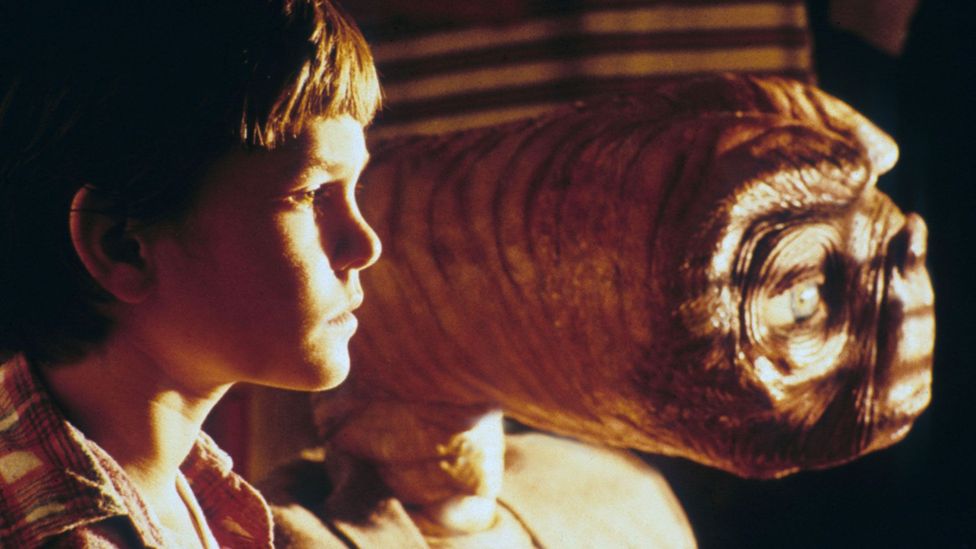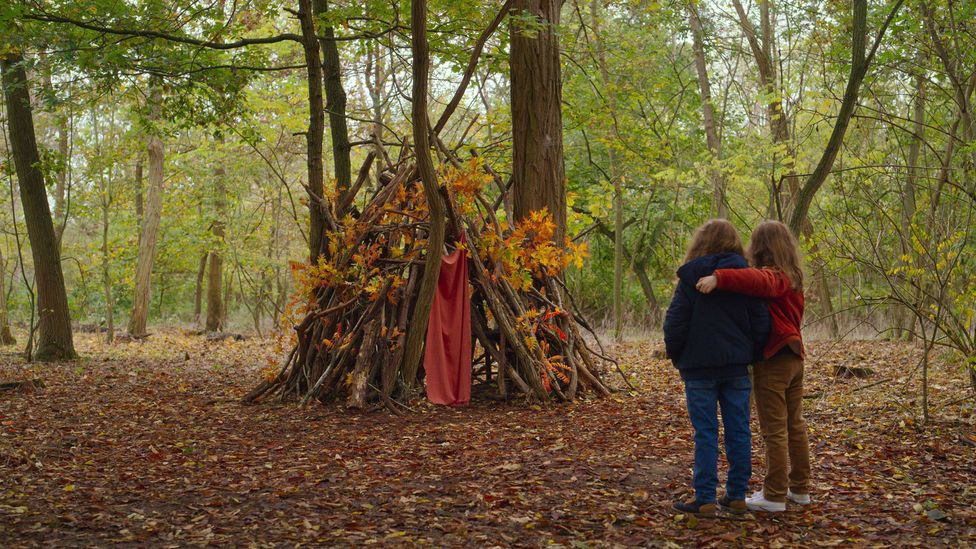What modern cinema could learn from ET

Much of Steven Spielberg’s filmography is associated with youth. Early on in his career, his own youth was a talking point: his debut feature film Duel (1971), originally shown on US TV when he was just 24, saw him hailed as a new wunderkind. Since then, much of his work has been aimed at youth culture, from the Boys’ Own adventure heroics of the Indiana Jones franchise to Hook (1991), his revisionist take on Peter Pan, the boy who never grows up. The adventure-land screams of the Jurassic Park films also belong in this vein of work in his cinema – as do later works like The BFG (2016) and Tintin (2011). Even Empire of the Sun (1987), a more plainly dramatic film, views the horrors of World War Two through the eyes of a child. But before all these came ET the Extraterrestrial, which was released in US cinemas 40 years ago this week. It was his first film to examine childhood directly, and its influence is still felt today in a film culture that tilts evermore towards youth in its focus.
More like this:
– The 12 best films of 2022 so far
– The childhood film that made Cannes sob
– The superhero movie Marvel can’t match
In fact, ET the Extraterrestrial premiered at Cannes Film Festival a couple of weeks earlier, on 26 May 1982, having been selected to close the 35th edition of the prestigious event: Spielberg was not – is not – an arthouse director, and so a premiere there was far from a given. Yet the movie met with rapturous acclaim from the get-go, causing an enormous standing ovation (back in the day when they were not granted so easily) that entered straight into the film’s legend. The buzz swiftly translated into enormous box office receipts, as the film racked up nearly $360 million from its original US release; to this day, it has earned almost $800 million worldwide (a figure that incorporates the film’s many re-releases, including a controversial re-release in 2002 when Spielberg had the film’s guns digitally changed into walkie-talkies). ET ended the 1980s as the US’s highest-grossing film of the decade. In 1982 itself, it came in at number one for the year at the US box office ahead of, at number 12, John Huston’s Annie, a film adaptation of the 1977 Broadway musical, which was also released in May, and also centred on a spunky but melancholy child – of which more later.

ET’s story draws on Spielberg’s own upbringing, and in particular his experiences as a child of divorce (Credit: Alamy)
Film directors had always looked to their childhoods for material, but in the cases of, say, Ingmar Bergman with Fanny and Alexander (1982), or Federico Fellini with Amarcord (1973), those films came much later in the creator’s work, functioning as a sort of wistful return to youth such as comes when considering one’s life to the full. ET is not autobiographical in the way of those films (not least because it prominently features a small, adorable alien crashing to Earth) but it clearly draws prominently on Spielberg’s youth, as he has mentioned on several occasions, particularly in the way that the film – as written by the screenwriter Melissa Mathison from an idea by Spielberg himself – reconfigures Spielberg’s childhood. The main aspect of that upbringing that has crossed over into the film is the divorce of Spielberg’s parents: in the film, protagonist Elliott (Henry Thomas) and his siblings, younger sister Gertie (Drew Barrymore) and older brother Michael (Robert MacNaughton), live with their single mother (Dee Wallace), and the absence of a father is keenly felt, especially in a painful dinner scene early on. Spielberg, the person, is sort of duplicated into the two boy characters of Elliott and Michael, being at once the lost child who yearns for friendship (which in the film’s case takes the form of a bond with the alien), and also the protective older sibling (Spielberg had two younger sisters).
A child’s-eye view
Spielberg, being in his mid-30s at the time of the film, was still relatively close to his subjects in age, which enables him to invest psychologically – that shows in the film’s keen emotional impact, as well as in Spielberg’s fresh cinematics, particularly the way his camera works at roughly children’s head height, investing physically in a child’s universe, and his no-nonsense, puckish attitude towards children’s banter, games and worldview. A comparison with the film’s contemporary Annie is informative, because that film has a much more top-down quality; it feels like the work of older people setting out to manufacture a children’s entertainment, with a cute story, a charming young actress, good songs, and the sense of everybody putting on a rollicking good show. All of this being the case, the film nevertheless has an artificial, slightly hokey feel to it nowadays, from its set decoration to the stiff performance of Albert Finney in the role of Daddy Warbucks. In this respect, Annie feels like the death rattle of young people’s entertainment of yore, and ET like the birth of a young people’s entertainment of the future, that really understands its key audience. The film director Joe Stephenson, currently working on an adaptation of Doctor Jekyll and Mr Hyde starring Eddie Izzard, and who named his production company Be Good productions after a famous line in ET, concurs: “The film feels like the OG of almost a genre of filmmaking,” he tells me. “I suspect that if you show a 6-year-old it today, they will feel just as spoken to, and just as moved.”
Rewatching the film in 2022, it’s certainly the case that the film has kept a fresh and original feel, even as it is clear to see its influence on the contemporary landscape. ET stands out most clearly for the wallop of its sentimental arc, which Spielberg brilliantly contrives from the heartfelt performances he obtains from his child actors, the unashamedly big and heartstring-tugging score by John Williams, as well as his facility for ramping up the tension so that the downbeats register all the more intensely. The film’s lone aspect that has aged somewhat iffily is its somewhat dubious politics of gender and sexuality: the script’s bizarre insistence that ET is male (to the extent that a scene of the alien “dragging up” is played for comedy), and a weird scene in which Spielberg, filming things from the alien’s perspective, appears to suggest that the alien has a thing for the children’s mother, play as old-fashioned curiosities in a film that is otherwise very straightforward.
Mostly, the film scores because, as well as daring to literally place itself at its protagonist’s height, it doesn’t talk down to the child characters: these are children who rebel, who respond to their environment, who have agency in their own world, and whose pain is accorded as much importance as they give it themselves. Molly Haskell, author of Spielberg: A Life in Films, concurs: “I think ET has been hugely influential in prioritising (even consecrating) the child’s point of view over that of that of grown-ups, whether authorities in uniform or distracted mothers”, she tells BBC Culture via email. Returning to the comparison with Annie, it’s clear that grown-ups are the agents in that film, and Annie herself is bounced back and forth between them: in ET, instead, Elliott and his siblings are the ones who carve out their own world, nursing the wounded alien, dressing it up, and returning it to its people by defying lawmakers.

ET arguably has more in common with an arthouse film like Céline Sciamma’s Petite Maman than today’s blockbusters (Credit: Alamy)
Its influence resounds today, and not only in the film’s most obvious descendants, such as Netflix series Stranger Things, with its self-conscious nostalgia for 1980s family filmmaking. It’s not too much of a stretch to see its legacy in the way Pixar has cornered the market for children’s entertainment, from Toy Story (where the toys can be seen as stand-ins of sorts for children) to Turning Red. However while Stephenson agrees that the film has been extremely influential, he thinks that few who have tried to make films “specifically in the ET mould have quite reached the harmony of ET”.
Indeed, if Spielberg’s fantastical, child-focused storytelling feels influential in the world of film and TV, ET’s more heartfelt elements and the time it accords to everyday life – as well as the way it doesn’t shirk pain and sorrow – feel strangely old-fashioned now and perhaps more aligned with arthouse cinema than with the frantic landscape of blockbusters. A likely cousin of ET, in this respect, is Céline Sciamma’s recent Petite Maman, which also has a supernatural dimension, and a resolutely child-centric, deeply emotional narrative. Here, as in ET, a lonely child, whose parents appear to be separating, encounters a fantastical playmate, a kindred spirit (in this case, by time-travelling to meet her own mother as a child); again, as in ET, the child is filmed sympathetically and with the sense that she is her own free agent, exerting an influence on the world around her. Another film clearly indebted to Spielberg, but which feels hampered by Spielberg’s trademark sentimentality, is Todd Haynes’s Wonderstruck (2017), which also premiered in Cannes: also set in a world of children, and again attempting to conjure a sense of wonder from the adventures of children, the film features a somewhat sorrowful child of divorce in the main role. The clear suggestion of Spielberg is there in the script, but it sits slightly uncomfortably with the more eccentric and twisty directorial vision of Haynes.
If ET has an unmistakably large footprint over the subsequent film landscape, spawning a reinvention of youth cinema as being led by youth themselves, from The Goonies to The Hunger Games, it has also dated, in the sense that we are no longer used to the care of its writing, its sheer cinematic craft (visible, for instance, in Spielberg’s delicious nods to trademark shots of confrontation in traditional westerns, when the children are escaping the adults, filmed marching ominously down a road in a row). Does the film hold up? Haskell, somewhat cryptically, tells me: “I think it stands up for the most part, but also might be retitled The Long Goodbye.” Perhaps in this sense, ET signalled the start of a new type of cinema, but also rang out a protracted cry of farewell to its own type of cinema, one which is governed foremost by emotions, and where action, fantasy and the otherworldly are only considered in terms of what they bring to bear on authentic human lives.
Love film and TV? Join BBC Culture Film and TV Club on Facebook, a community for cinephiles all over the world.
If you would like to comment on this story or anything else you have seen on BBC Culture, head over to our Facebook page or message us on Twitter.
And if you liked this story, sign up for the weekly bbc.com features newsletter, called The Essential List. A handpicked selection of stories from BBC Future, Culture, Worklife and Travel, delivered to your inbox every Friday.








